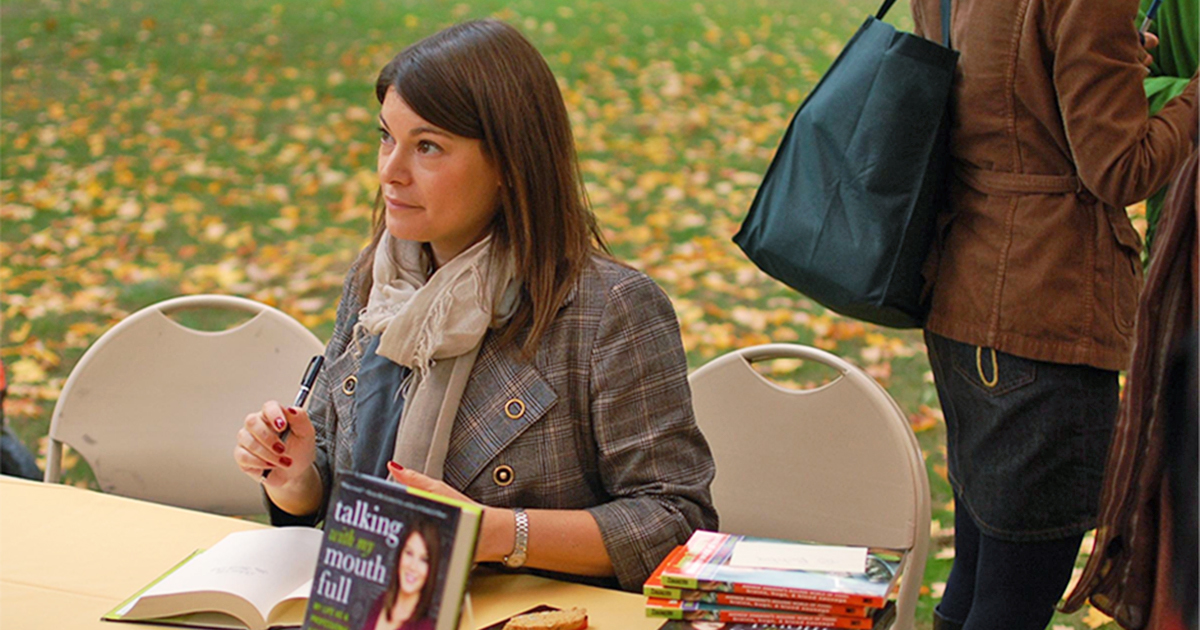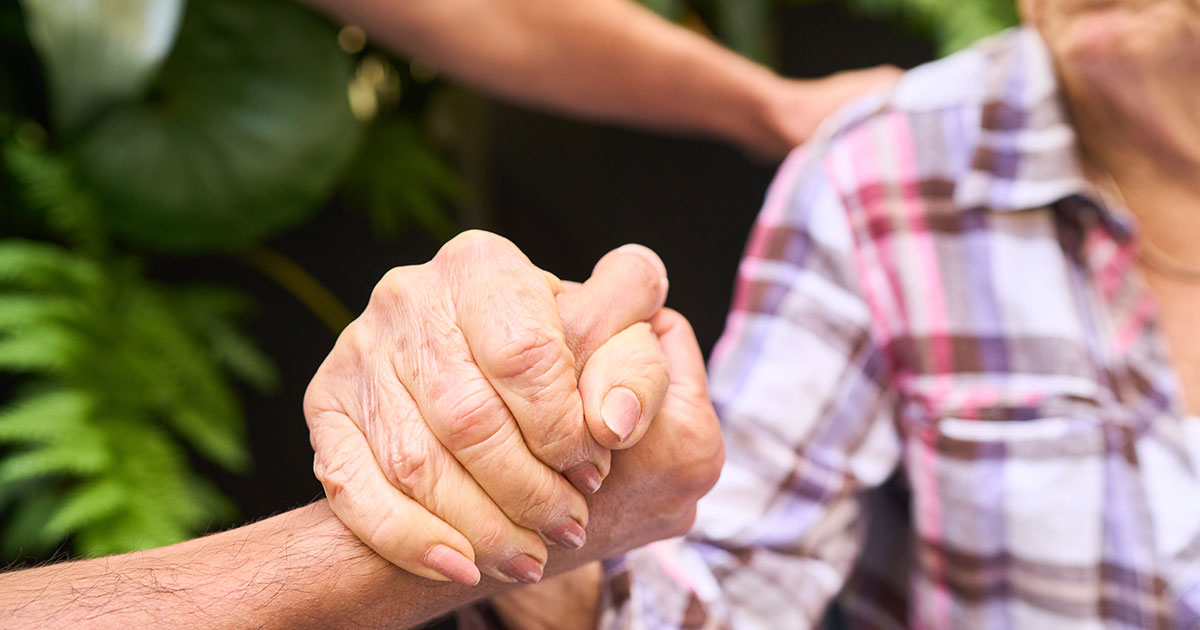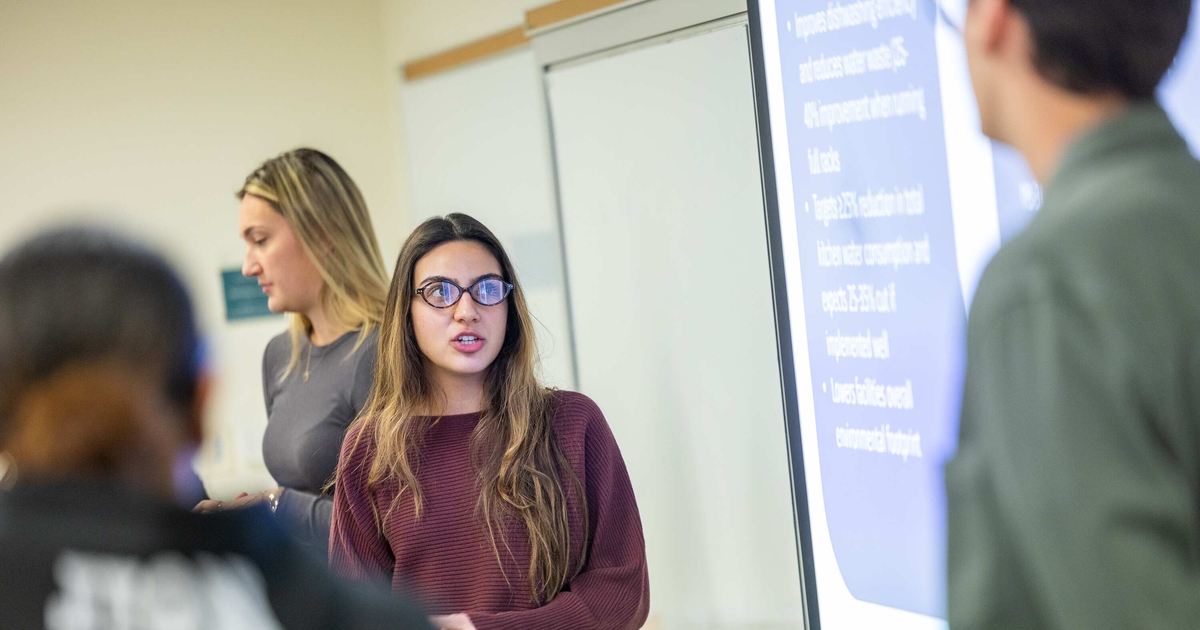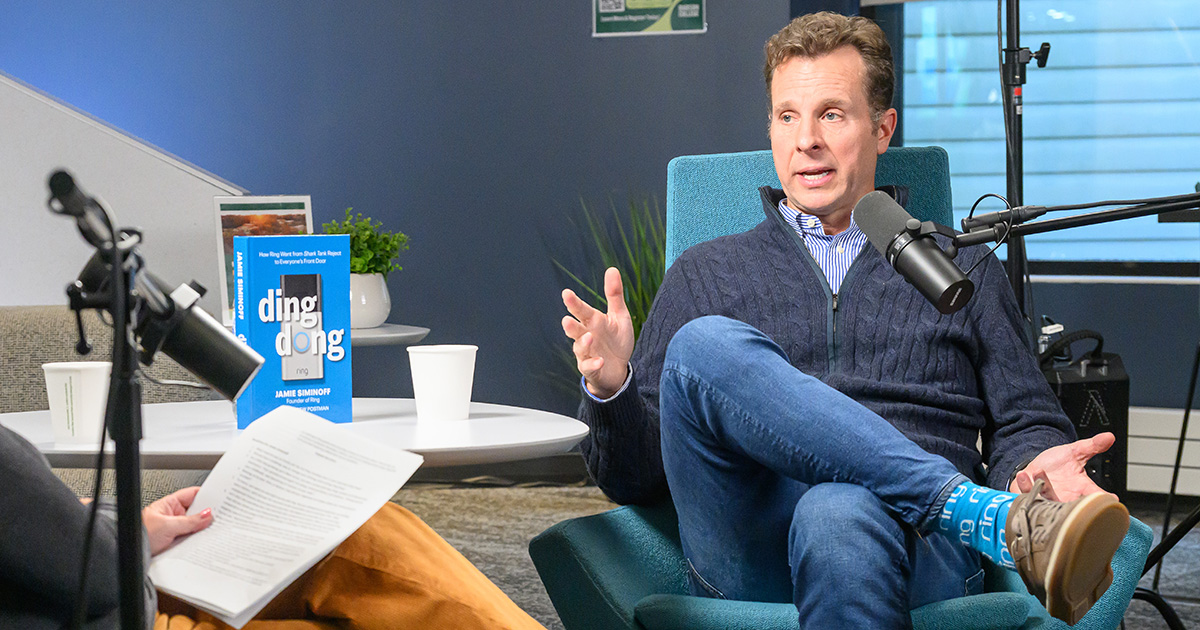Gail Simmons on Creating a Career

“What is food but a huge window into every culture in the world?”
That is the kind of rhetorical question an anthropologist might ask, so it makes sense coming from Gail Simmons, who studied anthropology in college before embarking on a career that has taken her around the world, bite by bite.
In some ways, the editor, reality TV judge, Babson College entrepreneur in residence, and professional eater is a poster girl for today’s gig economy. She loves eating, cooking, writing, and travel, and has built a career that incorporates each of her passions. “Looking back, the route seems clear now,” she says, “but at the time, I felt lost—my path was very meandering.”
Get Cooking
As her career took shape, Simmons figured out that she wanted two things out of her job: to use her brain, and keep her hands dirty. Restaurant kitchens are modeled after an army brigade and have very specific roles, leaving little room for creativity at the bottom of the ranks. Staying tethered to a desk also had little appeal, but writing food critiques offered the perfect goldilocks solution.
With degrees from McGill and the Institute of Culinary Education under her belt, along with stints working on the hot line in two New York City kitchens, Simmons began a two-year assistantship for Vogue food critic Jeffrey Steingarten. She described the experience as her greatest education. “Jeffrey’s best advice to me was: ‘If you do the research thoroughly, the essay will write itself,’” she said. The assistantship was an exercise in trial and error, all in the name of thorough research.
“I knew I wanted to learn everything I could about food, chefs, and the language so that I could write with authority,” said Simmons. That meant understanding everything from the fermentation process in cheese, to the sugar content of peaches at various stages of ripeness, to how to perfectly cook a goose.
For the peach project, Steingarten had Simmons try 20 varieties of peaches each day and analyze them for taste and sweetness. For the goose lesson, she prepared the same recipe for goose countless times. “Alone in a house with him making goose, after goose, after goose was a crazy adventure,” she has said. It also showed her how subtle differences in oven temperature, cooking time, and ingredients could have a big effect on taste. Most of all, it taught her patience, boosted her kitchen confidence, and reinforced the idea that meals, projects, and ideas aren’t necessarily done when you think they are.
Find a Near Peer
Simmons’s book, Talking With My Mouth Full, describes a childhood spent learning from her entrepreneur mother, who ran a small cooking school out of their home and wrote food columns for Toronto’s The Globe and Mail. Her father made his own wine, and both parents instilled a belief in Simmons that she could do anything she wanted in life.
Finding both male and female mentors who were willing to take a chance on her and would tolerate small failures helped Simmons build confidence and resilience, both in writing and in the kitchen. They also buoyed her morale (restaurant kitchens can be tough environments) and supported the nontraditional path she was carving. “Jeffrey said he could only think of one other food writer he knew who had spent as much time working in kitchens as I had,” she commented. “He said it was incredible and he was impressed, which was such a huge validation for me.”
Susan Duffy, executive director of the Center for Women’s Entrepreneurial Leadership at Babson, says, “One of the ways you build confidence is by seeing someone who looks like you and sounds like you succeed. It becomes easier to say if she can do it, I can do it.” Just as Simmons looks to the example her mother and other mentors have set, she was just 29 when Top Chef debuted, and hit her professional stride in her early 30s, making her a natural “near peer” role model for other young women.
Landing on Top Chef
Of course, Simmons is probably best known as a knowledgeable and articulate judge on Bravo’s reality series Top Chef. Like everything else, she arrived at the judge’s table in a roundabout fashion. Ten years ago, she was working as special projects director at Food & Wine when Bravo approached the magazine with an idea for a reality show. In her words, up to that point her TV experience consisted of “cooking demos and talking about Easter menus on The Today Show.”
“Top Chef was a great leap of faith,” she said, “since I’ve always thought of myself first as an editor and writer. The thought of judging professional chefs on national television would have never entered my mind, but the food industry has changed to become so much larger and more layered than just chefs and restaurants.”
And, perhaps that is the biggest lesson of all—understanding that the most consistent ingredient during the course of a career is change, and with that, creating something uniquely satisfying.
Posted in Entrepreneurial Leadership





